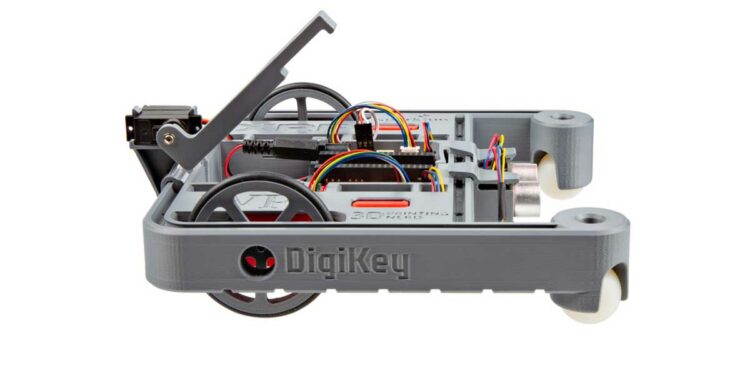DigiKey, a leading global commerce distributor offering the largest selection of technical components and automation products in stock for immediate shipment, announces a collaboration with SparkFun to bring Experiential Robotics Platform (XRP) kits to the next generation of engineers, developers and innovators.
The XRP open-source platform is an educational, easy-to-use robotics program carefully designed to equip the next generation of makers with hands-on STEM skills. Educators can use the beginner-friendly XRP curriculum, which lowers the barriers to learning robotics, engineering, software development and automation.
Making the XRP robotics kit accessible to emerging STEM leaders aligns with DigiKey’s mission to foster innovation and education by providing hands-on experiences that reveal the numerous opportunities available for students and makers’ futures. XRP is an affordable, easy-to-use gateway to robotics education. The kit is available on DigiKey’s website for $114.95. This year, DigiKey is offering educators and FIRST Robotics teams a discount on the XRP kit, allowing more students to begin participating in robotics programs.
“As demand for STEM education continues to grow, DigiKey is committed to supporting students, educators and makers by providing accessible learning tools that build real-world engineering experience,” said Kevin Walseth, manager, technical marketing for DigiKey. “The XRP kit is more than just a robotics platform, it’s a steppingstone for future innovators who will one day lead the electronics industry.”
“We are immensely grateful to be part of the XRP community, which embodies innovation, collaboration and a shared vision for a brighter future,” said Glenn Samala, CEO of SparkFun. “At SparkFun, we are dedicated to nurturing the next generation of entrepreneurs, engineers and leaders. Our commitment to education and STEM aligns perfectly with the principles of the XRP Consortium, and we are excited to continue to manufacture, further innovate and scale XRP.”
































